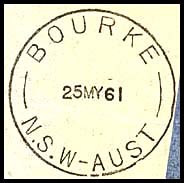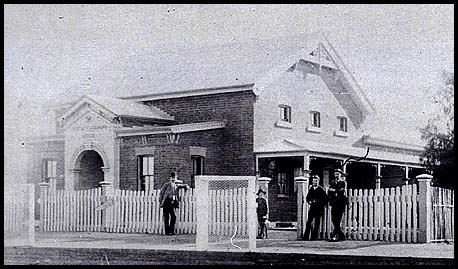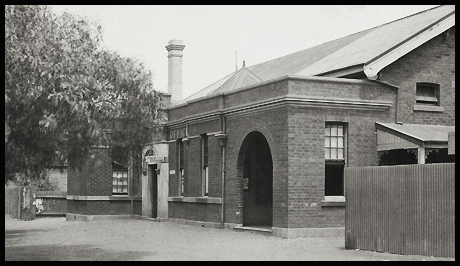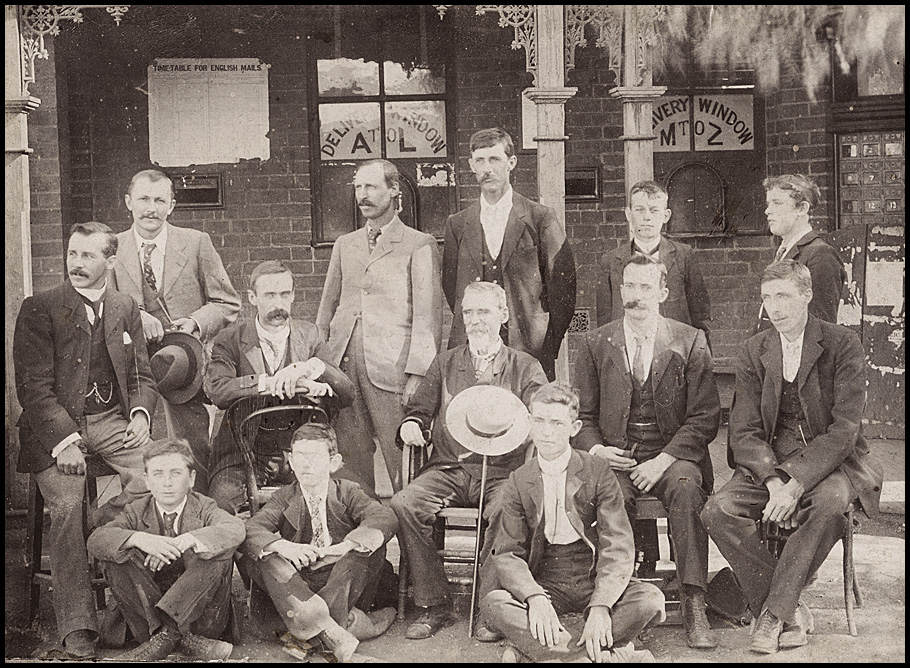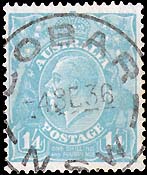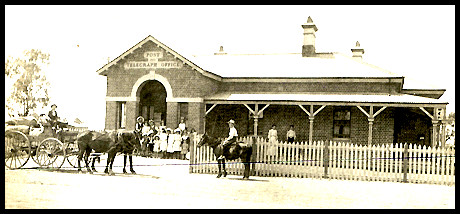Telegraph Offices in the Far West region.
- Home, index, site details
- Australia 1901-1988
- New South Wales
- Overview of NSW
- Telegraph lines
- Telegraph Offices
- Date stamps
- Forms
- Envelopes
- Rates
- Stamps
- Queensland
- Overview of Qld
- Telegraph lines
- Telegraph offices
- Date stamps
- Forms
- Envelopes
- Rates
- Stamps
- South Australia
- Overview of SA
- Telegraph lines
- Telegraph Offices
- Date stamps
- Forms
- Envelopes
- Rates
- Stamps
- Tasmania
- Overview of Tasmania
- Telegraph lines
- Telegraph Offices
- Date stamps
- Railway lines
- Forms
- Envelopes
- Rates
- Stamps
- Victoria
- Overview of Vic.
- Telegraph lines
- Telegraph offices
- Date stamps
- Forms
- Envelopes
- Rates
- Stamps
- Ephemera
- Western Australia
- Overview of WA
- Telegraph lines
- Telegraph Offices
- Date stamps
- Forms
- Envelopes
- Rates
- Stamps
The following Telegraph Offices are included in this page:
| Bourke | Bourke Railway Station | Broken Hill | Cobar | Hungerford |
| Louth | Menindie | Silverton | Wilcannia |
| Bourke.
The Telegraph Office was opened on 2 August 1873. Unfortunately it burnt down in November 1874 (see below). The Telegraph Office was combined with the Post Office on 18 July 1879. In anticipation of that amalgamation happening, a tender was let for the construction of a new Post & Telegraph Office on 26 November, 1878. A Post Office had opened in Bourke on 22 July 1862. Bourke is 781 km from Sydney. |
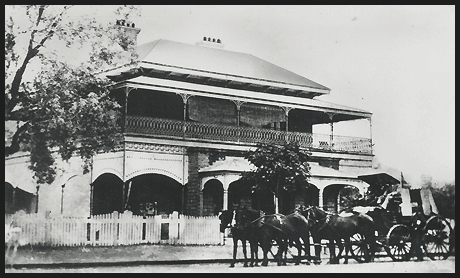 Bourke Post & Telegraph Office with Cobb & Co. mail coach outside. Building constructed in 1880 and addition to front added later. |
Diameter: 32 mm. Used on AA-DO-13B. |
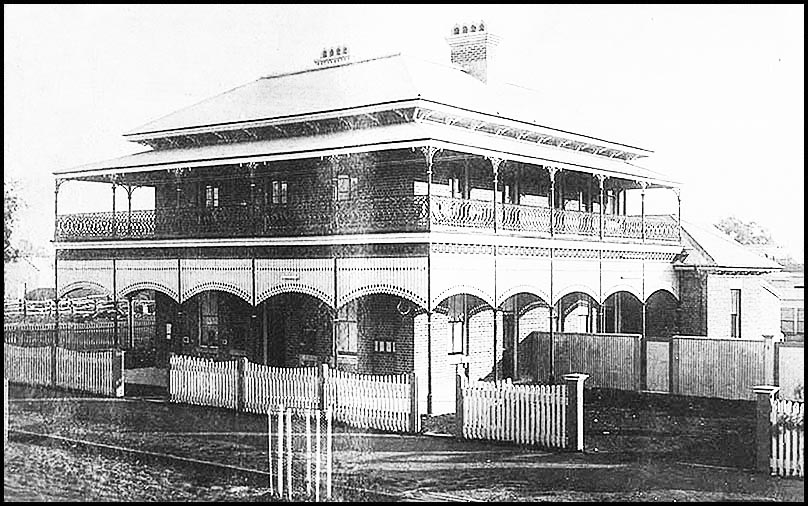 Bourke Post & Telegraph Office about 1885. |
FIRE AT BOURKE: The Central Australasian 21 November 1874 reported: "On Sunday morning, between 5 and 6 o'clock, a Servant at Tattersall's Hotel heard a crackling, like wood burning, and opened her bedroom door and saw smoke issuing from an adjoining room. She at once roused Mr. Sproule and the whole house, which was full of company and everyone set to work to put out the fire but it was too late. They soon found that nothing could save the wood cottage adjoining the brick house, which was subsequently entirely destroyed; and they had the greatest difficulty in saving the brick house, which caught fire several times. The wind, which was blowing onto the brick house, veered round towards the back of the Telegraph Office, otherwise perhaps the brick house would also have been lost. As it was, the kitchen of the Telegraph Office caught fire and then extended to the Telegraph Office which was totally destroyed. Mr. Wallace's house also caught fire, and Mr. Becker then gave instructions to pull down Mr. O'Loughlan's place of business to save the houses beyond it but fortunately the fire did not extend so far. Mr. Trader succeeded in saving the telegraph instruments and on Monday opened a temporary office at Mr. Garot's, on the opposite side of the road". A massive flood swept down the Darling River in April 1890. Warning telegrams were sent from Queensland warning of the volume and speed of the water coming which would completely flood Bourke (see, for example, the Capricornian 19 April 1890, p. 25). |
|
|
A Telegraph Office was opened at the Bourke Railway Station on 14 September 1894. It was closed in 1900. |
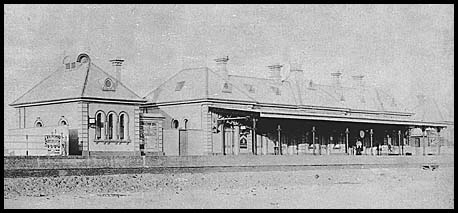 Bourke Railway Station about 1894. |
| Broken Hill (Willyama).
The Telegraph Office was opened on 2 August 1886 and merged with the Post Office 11 days later (on 13 August). The Post Office had only been opened on 1 January of that year. In 1888, the NSW Government began to develop the town extensively. The SA Register of 16 May 1888 noted "the present Post Office, which is itself an improvement on its primitive predecessor, will be replaced by an attractive and commodious building ... There will be a Post-Office at the Pinnacles and telegraph communication to Puraamoota". In June 1942, Broken Hill employed its first girl telegram messenger - Valarie Larssen. The postmaster "explained" it was becoming more difficult to obtain boys for the job. Only four months later, the Barrier Miner of 24 October 1942 announced "another field into which the female sex has entered is that of the telegram messengers. A girl 'Toti' Stacey has started at the Post Office delivering telegrams. Riding a post office cycle, she is very efficient".
|
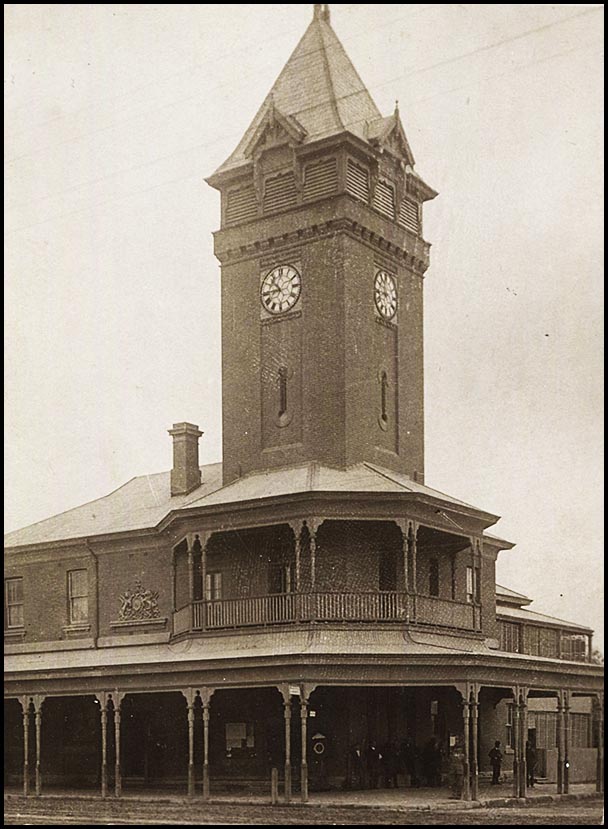 |
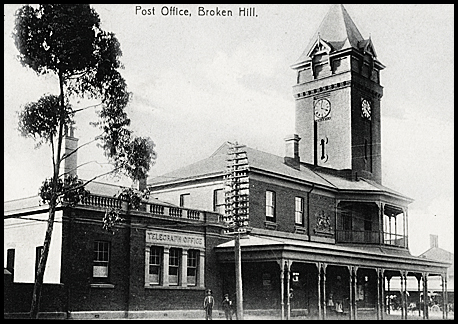 Showing the entrance to the Telegraph Office. |
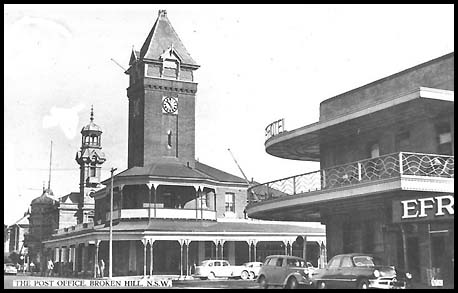 |
| Four formats of date stamp were issued to Broken Hill Office for use with telegraphic business: | ||
|
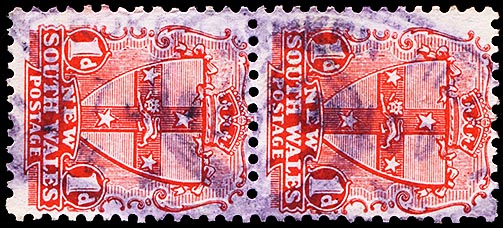 17 January 1900. |
|
|
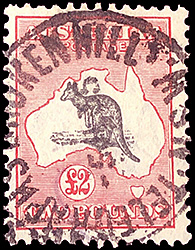 5 August (?) 1935. |
|
Has 1 mm side arcs.
|
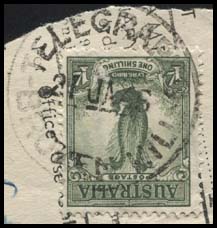 21 January 1946. |
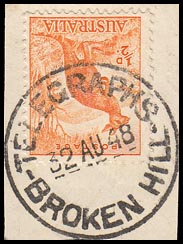 32 (sic) August 1948. (probably Wednesday 1 Sept.) |
|
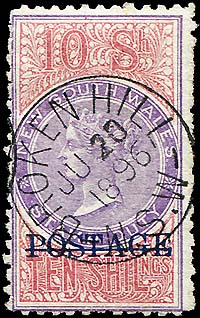 20 July 1896. |
|
Telegraph Offices were also opened at:
|
||
|
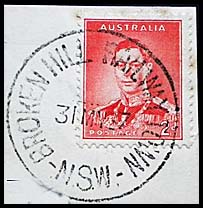 31 May 1937. |
|
The Office was issued with a TELEGRAPHS date stamp (RC1-T):
|
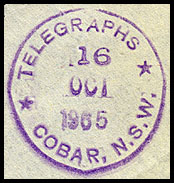 16 October 1965. Used on AA-TO-13D (ERD). Date stamp has been pushed out of its circular shape. |
The usual postal date stamp was also used at Cobar on telegrams. Type 2C date stamp |
|
|
The Telegraph Office opened on 3 December 1877 and merged with the Post Office on 11 July 1878. Changed name from Perry on 1 July 1866 and changed name to Menindee on 15 April 1918. |
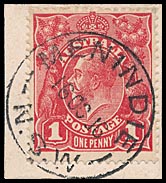 Menindie. 16 October 1916. |
|
A Post & Telegraph Office was opened on 25 August 1885.
|
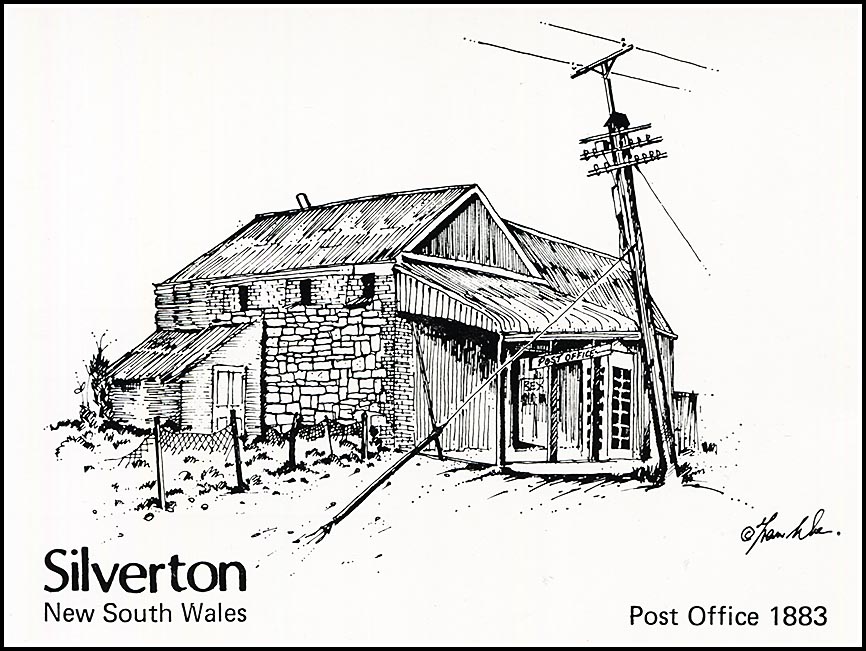 |
| The Silverton Age of December 1884, under the heading Town Improvements, discussed the very positive efforts being made to erect hotels in the main street called "Burke": The following extract from the last paper to hand from the silver mines show that there are many thirsty people there" Following the street to the next block, we come to De Baun's' far-famed corner, where the proprietor assures us that eighteen tons of grog were disposed of over the bar counter within the first four weeks of opening. No wonder that a thirst of a raging sort prevails at Silverton for the heat is said to be at times so great that one hotel-keeper has constructed, among other conveniences, a cool underground saloon - the popular resort during oppressively hot afternoons and evenings. This accounts for the eighteen tons of grog swallowed at De Baun's, as the "cool grot " was not then built". What, the paper asks, will the Blue Ribbon party aay to all this? | |
No special date stamp was issued to Silverton for use with telegraphic business. Instead the usual postal date stamp was used.
|
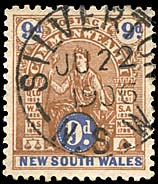 22 July 1906. Used on 9d Commonwealth issue which could be used to pay the cost of a 16 word ordinary rate telegram to a destination within NSW. |
| Wilcannia.
The Post & Telegraph Office was opened on 16 March 1878. The Post Office had opened as Mount Murchison on 1 January 1860. It was moved 5 kms to the town and changed name to Wilcannia on 1 June 1868. In 1878, part of the Wharf Reserve on the Darling River was set aside for a new building and it was occupied on 27 June 1880. By 1870, Wilcannia had a store and post office, with a few residents living at the foot of Mount Murchison. Its chief claim to importance was that it was the headquarters of the Crown Lands Commissioner of the Albert Pastoral District, Mr. John Chadwick Moore, who had fixed the site for a town in 1864. Until 1871, there was not a church of any denomination from Wentworth to Walgett, a distance of nearly 1200 miles. |
|
When the Mt. Browne gold fields were discovered in January, 1881, the work at the Wilcannia office increased so much that a resident warden was appointed at Milparinka and clerical assistance was granted to the Post Master at Wilcannia. The only date stamp provided to the office for use with telegrams was a rubber date stamp. It was used with red ink about 1959. |
|
A rubber circular TELEGRAPHS date stamp (RC1 - T) was used at the Office:
|
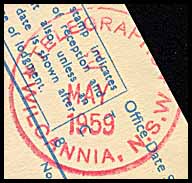 2 May 1959. Used on AW-DO-10 (56). |
The usual postal date stamp was also used at Wilcannia for telegraphic business.
Used 1884-1906. |
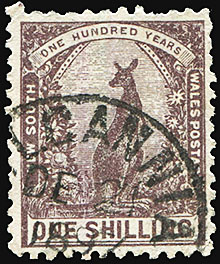 21 December 1897. |
